Turtle Dove, Zomertortel, Turteltaube, Rola-comum, Tórtola Europea
Spotted in the Alentejo region of Portugal. Turtle Dove sound
The European Turtle Dove (Streptopelia turtur), also known as the Turtle Dove, is a member of the bird family Columbidae, the doves and pigeons.
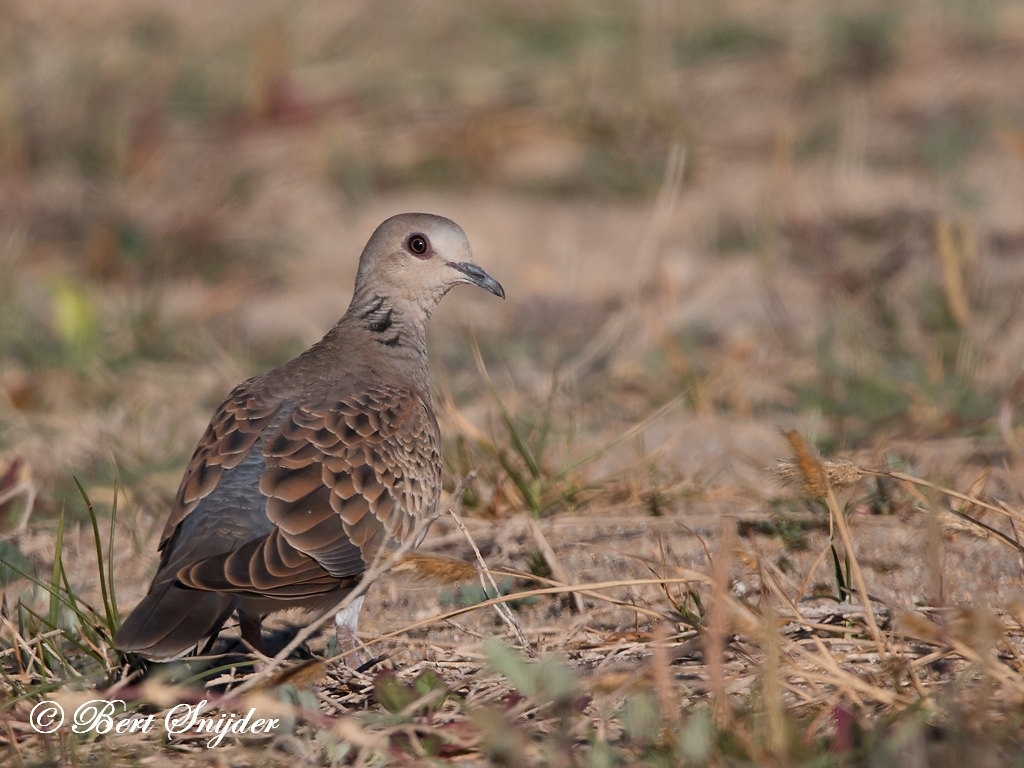
More photos at the bottom of this page.
It is a migratory species with a southern Palearctic range, including Turkey and north Africa, although it is rare in northern Scandinavia and Russia. It winters in southern Africa.
According to the State of Europe’s Common Birds 2007 report, the European Turtle Dove population in Europe has fallen by 62% in recent times. This is partly because changed farming practices mean that the weed seeds and shoots on which it feeds, especially fumitory, are more scarce, and partly due to shooting of birds in Mediterranean countries during their migration.
Smaller and slighter in build than many other doves, it measures 24–29 cm (9.4–11 in) in length, 47–55 cm (19–22 in) in wingspan and weighs 85–170 g (3.0–6.0 oz). The European Turtle Dove may be recognised by its browner colour, and the black-and-white-striped patch on the side of its neck. The tail is notable as the bird flies from the observer; it is wedge shaped, with a dark centre and white borders and tips. When viewed from below, this pattern, owing to the white under-tail coverts obscuring the dark bases, is a blackish chevron on a white ground. This can be seen when the bird stoops to drink and raises its spread tail.
The mature bird has the head, neck, flanks, and rump blue grey, and the wings cinnamon, mottled with black. The breast is vinaceous, the abdomen and under tail coverts are white. The bill is black, the legs and eye rims are red. The black and white patch on the side of the neck is absent in the browner and duller juvenile bird, which also has the legs brown.
The European Turtle Dove, one of the latest migrants, rarely appears in Northern Europe before the end of April, returning south again in September.
It is a bird of open rather than dense woodlands, and frequently feeds on the ground. It will occasionally nest in large gardens, but is usually extremely timid, probably due to the heavy hunting pressure it faces during migration. The flight is often described as arrowy, but is not remarkably swift.
The nuptial flight, high and circling, is like that of the Common Wood Pigeon, but the undulations are less decided; it is accompanied by the whip-crack of the downward flicked wings. The arrival in spring is heralded by its purring song, a rather deep, vibrating “turrr, turrr”, from which the bird’s name is derived. Despite the identical spelling, the “turtle” of the name, derived from Latin turtur, has no connection with the reptile; “turtle” in that case came originally from Late Latin tortuca.

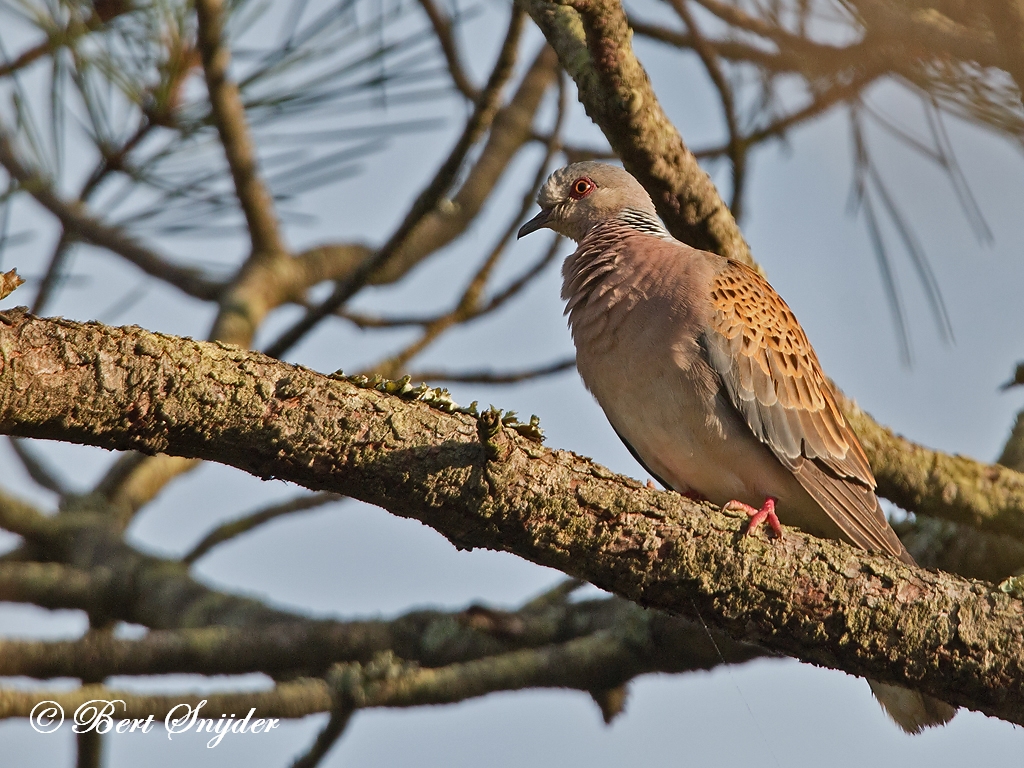

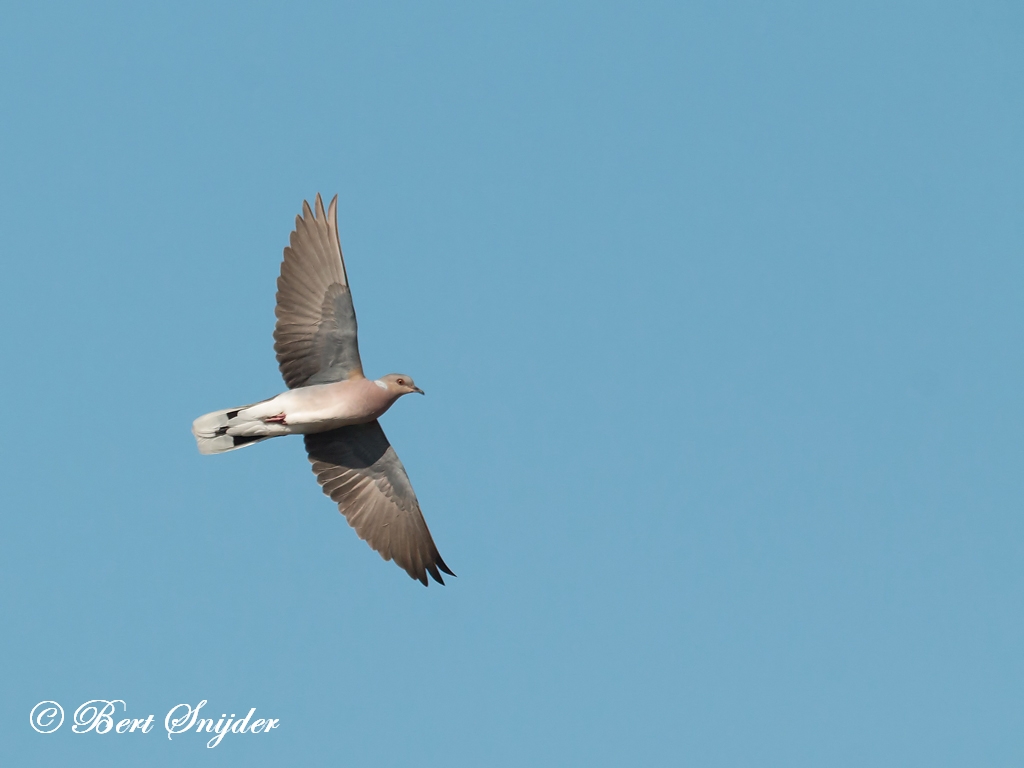
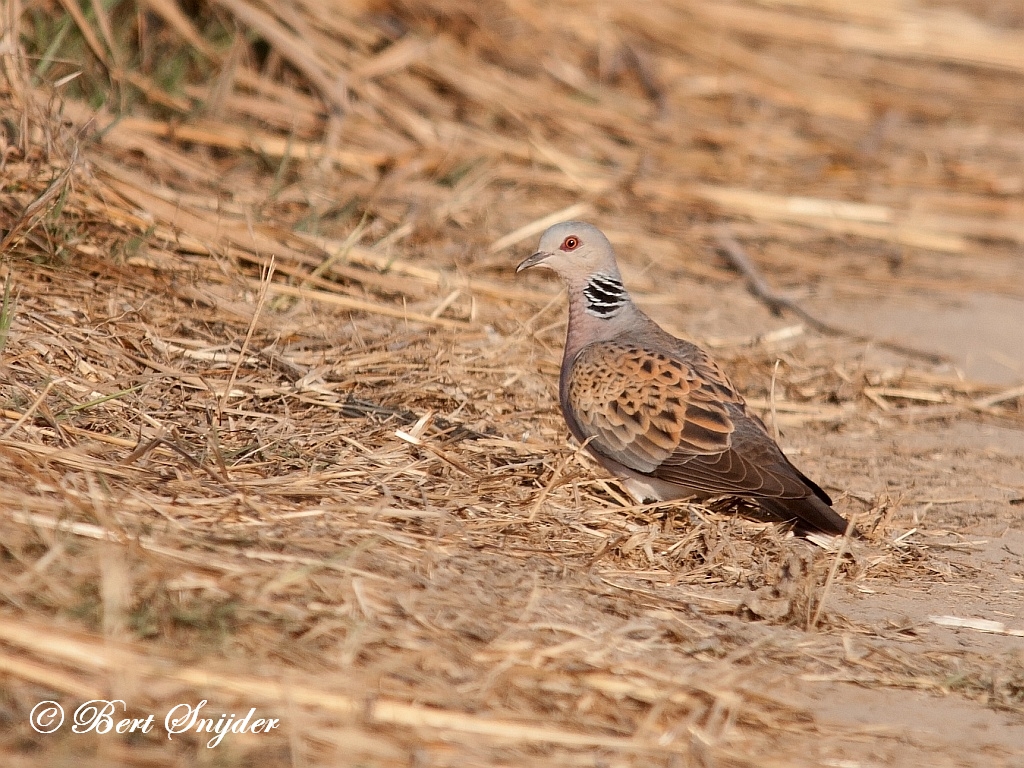
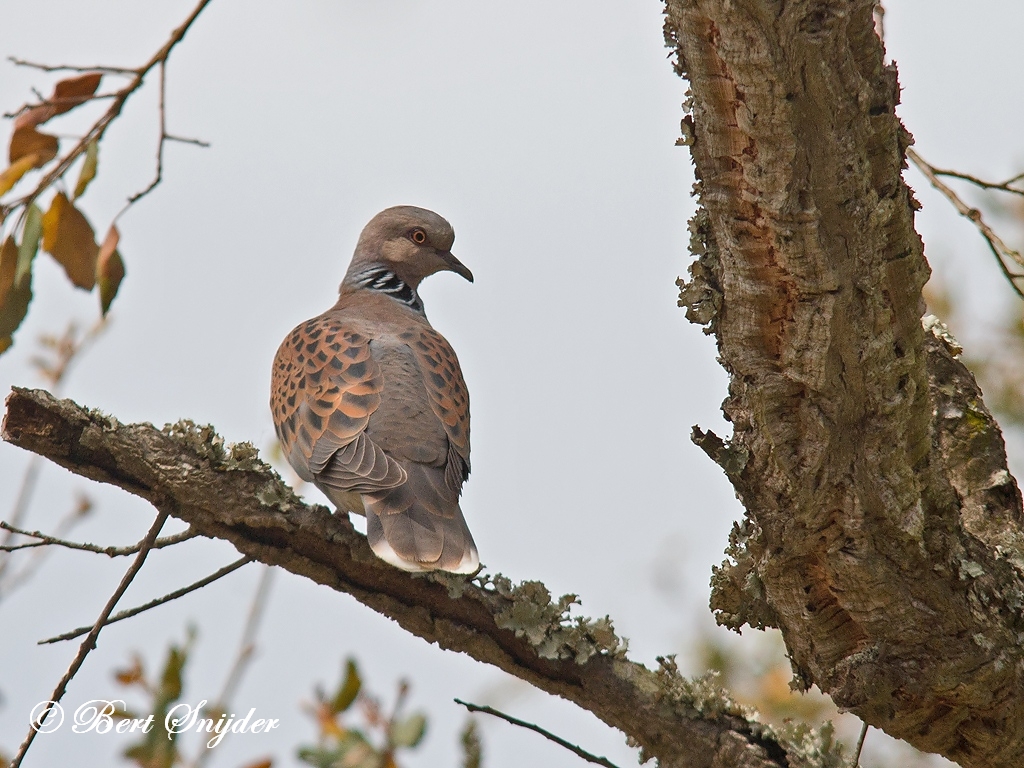


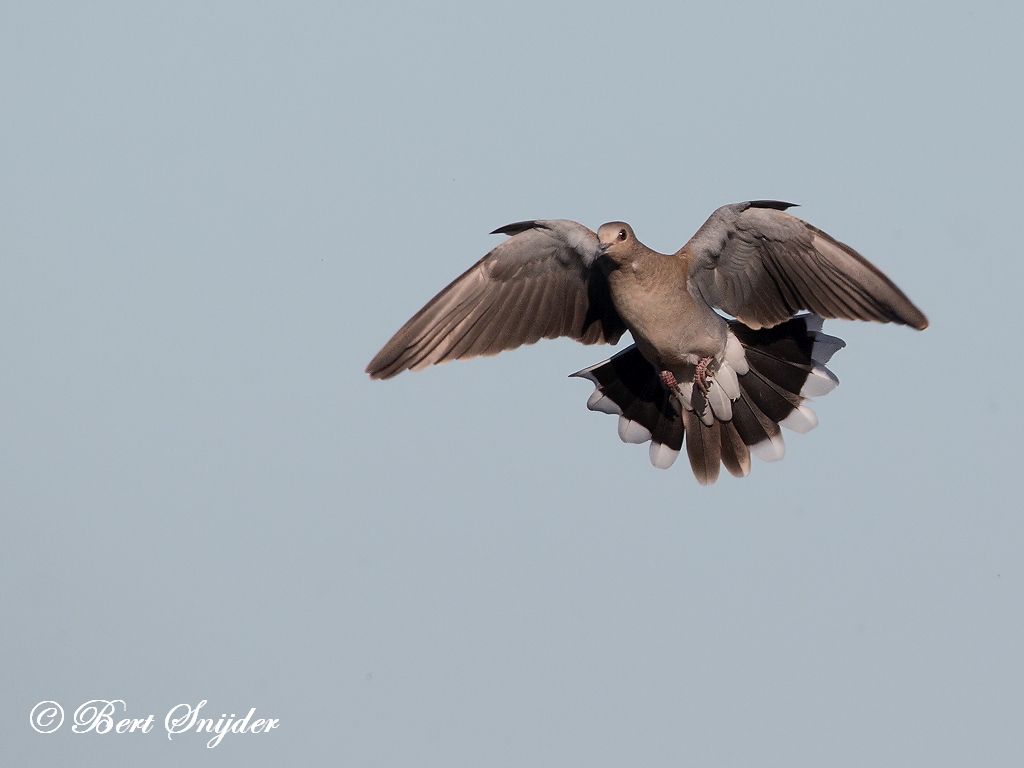
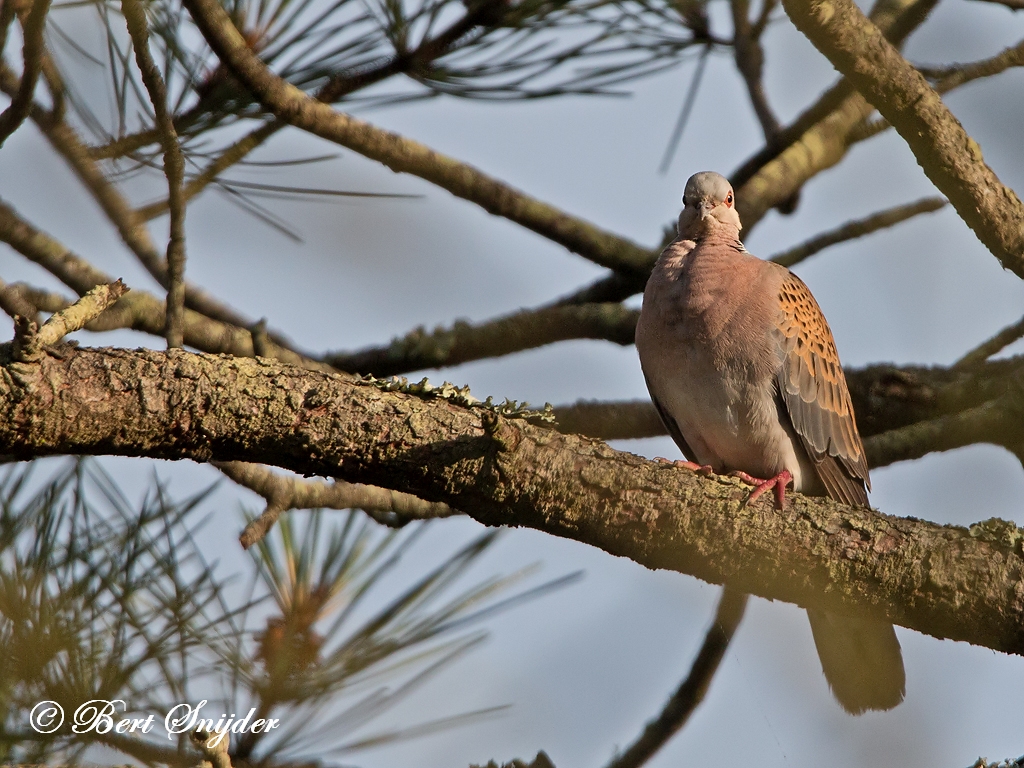

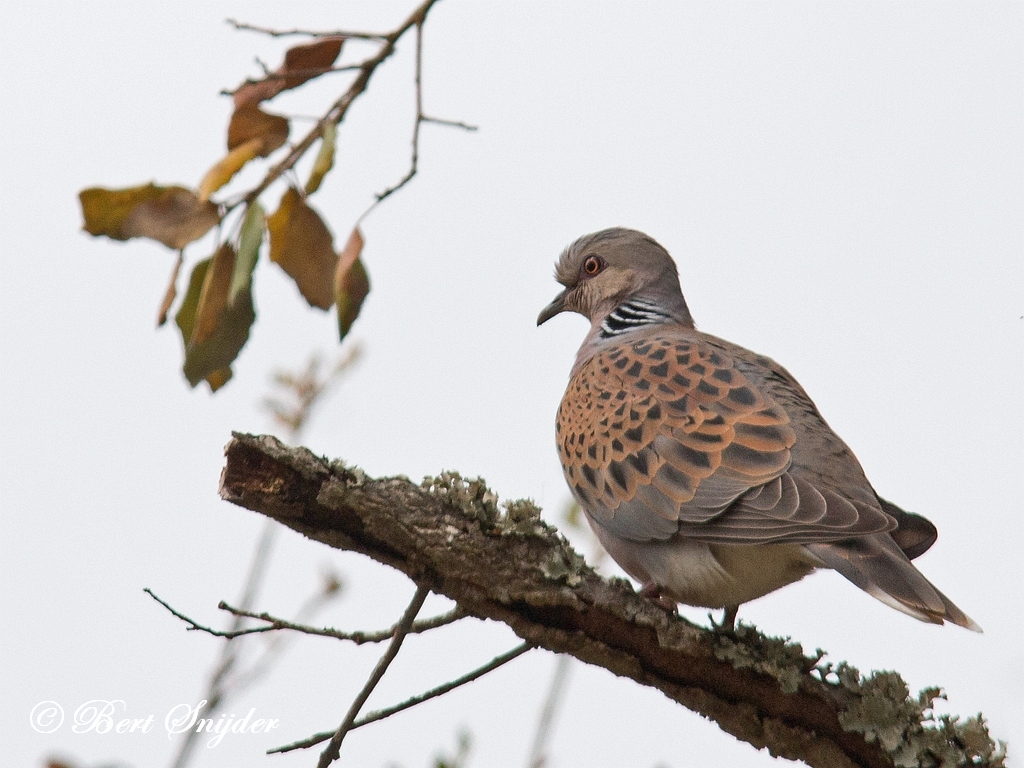
Other synonyms:
Afrikaans: Europese Tortelduif
Asturian: Rulla
Azerbaijani: Qurqur
Bulgarian: gurgulica
Breton: An durzhunell boutin, turzhunell voutin
Catalan: Colom roquer, Tórtora, Tórtora vulgar
Catalan (Balears): Tórtora
Valencian: Colom roquer
Czech: Hrdlicka divoká, hrdlièka divoká
Welsh: Colomen Fair, turtur, Y durtur
Danish: Turteldue
German: Turteltaube
English: Common Turtle-Dove, Eurasian Turtle Dove, Eurasian Turtle-Dove, European Turtle Dove, European Turtle-Dove, Turtle Dove, Turtle-Dove
Esperanto: turto
Spanish: Paloma de castilla, Paloma doméstica, tórtola, Tortola Comun, Tórtola común, Tórtola Europea, Tórtula Común
Spanish (Argentine): Paloma doméstica
Spanish (Honduras): Paloma de castilla
Spanish (Mexico): Paloma Doméstica
Estonian: Turteltuvi
Basque: Tórtora, usapal, Usapal arrunt, Usapala
Finnish: Tunturikyyhky, Turturikyyhky
Faroese: turtildúgva
French: tourterelle, Tourterelle des bois
Friulian: Colomp salvadi, tortorele
Frisian: toarteldo
Irish: fearán, Féarán breac, rula común
Gaelic: Calman Tuchan
Galician: Pomba brava, Rula turca, Tórtora
Manx: calmane coe, Turtur
Croatian: Divlja grlica, Grlica
Hungarian: Vadgerle
Icelandic: Turtildúfa
Italian: Tortora, Tortora comune, Tortora europea, Tortora selvatica
Japanese: kokijibato, Kokiji-bato
Karelian: Gyly, Kyyhköi
Kashmiri: [Kotur]
Cornish: durenn, Kolomm an garrek, Turen
Latin: Streptopelia turtur
Ladin: Colomba salvaria
Lithuanian: paprastasis, Paprastasis purplelis, purplelis
Latvian: parasta ubele
Malay: Burung Merpati
Maltese: gamiema
Dutch: Europese tortelduif, Tortel, Tortelduif, Zomertortel
Norwegian: Mongolturteldue, Turteldue
Occitan: Colomb, tortora
Polish: Sierpówka, turkawka, turkawka (zwyczajna), turkawka zwyczajna
Portuguese: Pombo-domestico, rola, Rola Europeia, Rola-comum, Rola-Europeia
Portuguese (Brazil): Pombo-domestico
Romansh: Columba selvadia, turturella
Romanian: turturica
Romany: Bareski-golumbaika, Baresko-golumbo
Russian: gorlica, gorlinka, Obyknovennaya Gorlitsa
Sardinian: trutiri, Trùttini, Trùttuli, trùtture, truvamassaju, turture
Scots: Calman tuchan, calman-tùchan
Northern Sami: Irgeduvvá, turtelduvvá
Slovenian: divja grlica, grlica
Albanian: turtulli
Serbian: grlica,
Swedish: Turturduva
Swahili: Hua wa Ulaya
Tamil: [Mada pura]
Turkmen: üveyik
Turkish: Adi Kumru, Üveyik
Ukrainian: gorlicja
Travel Birdwatching Holiday Alentejo, Vacation Portugal for birders to see birds on your trip.